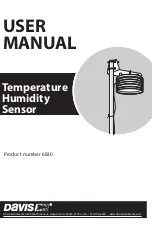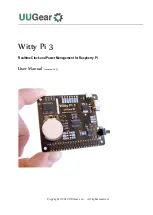
For the azimuth axis there is another offset which also is taken into account, the 'Antenna course'.
This value is provided for mobile applications where a compass reading has to be included into
the azimuth value.
Calibration scale --- Normally the ACU assumes that the full range of a position sensor
corresponds 360°. If you are using a multiturn position sensor or if the position sensor is
mounted to the shaft of a gear rather than to the antenna axis directly, the position sensor
reading must be scaled. The displayed angle is computed as follows:displayed-value = ((raw-
pre-scale-offs) * scale) + pos-scale-offsMathematically a scale value of 1.0 disables
the scaling. Beside this, the ACU also accepts the special value 0 to disable scaling at all. If
you set 1.0, the ACU performs the scaling with this factor. With the value 0 the scaling is
skipped completely, including the conversion of the reading to floating point. This ensures,
that the full accuracy is retained in cases where no scaling is necessary.
Sense invert --- With this parameter you easily can reverse the sense of a position sensor.
The sense should be as follows:
Azimuth: The antenna looks more to the west for larger values.
Elevation: Larger values mean higher elevation.
Polarization: The feed turns clockwise (when looking through the antenna to the
satellite) for increasing values. When operated on the southern hemisphere, the
polarization sense must be set the other way round.
Motor driver type --- The ACU knows two different configuration modes to control a motor
driver. They are called DIR-START and DUAL-START. In DIR-START mode, the FWD signal
switches the motor on/off, the REV signal controls the motor direction. This is the
configuration many frequency inverters use. In DUAL-START mode, the FWD signal
switches the motor on in forward direction, REV activates the motor in reverse direction. This
configuration mode is convenient to control a motor with relays. Beside the modes DIR-
START and DUAL-START you may set the motor driver type to NONE which prevents the
ACU from controlling the motor at all.
Low speed threshold --- The ACU controls a motor at two speeds. If the actual position is far
away from the target value, the ACU commands the motor to use the fast speed. Once the
antenna comes close to the target value, the ACU slows down the motor. The low speed
threshold sets the angle deviation which lets the ACU use the fast motor speed.
Pointing hysteresis --- The ACU performs the motor control as a closed loop: if the angle
reading and the target value differ, the motor is switched on to compensate the difference. If
the difference is less than the hysteresis value, the ACU leaves the motor switched off. This
prevents the antenna from oscillating around the target value.
Motor timeout --- The ACU monitors the position readings while the motor is running. If there
is no change in the position readings for some time, the ACU assumes to motor to be
blocked and switches it off. This 'motor timeout' fault must be reset by the operator to
release it. A timeout value 0 disables the timeout.
Lower limit --- The minimum target value accepted at the user interface and via remote
control. This software limit prevents the ACU from running the antenna to the limit position
under normal conditions.
Upper limit --- The maximum target value accepted at the user interface and via remote
control. This software limit prevents the ACU from running the antenna to the limit position
under normal conditions.
(C) 2022, SatService GmbH
www.satnms.com
ACU-ODU-DC-UM-2209 Page 31/67
















































